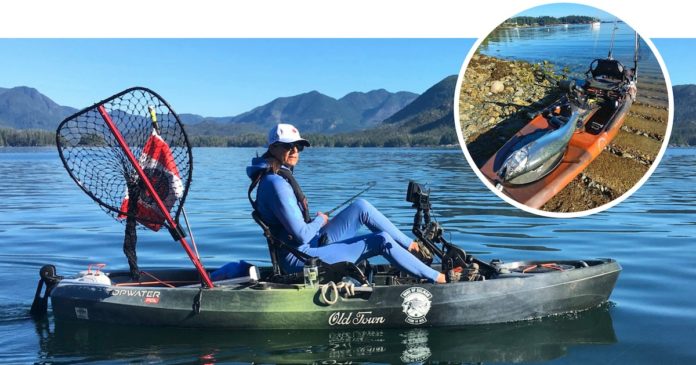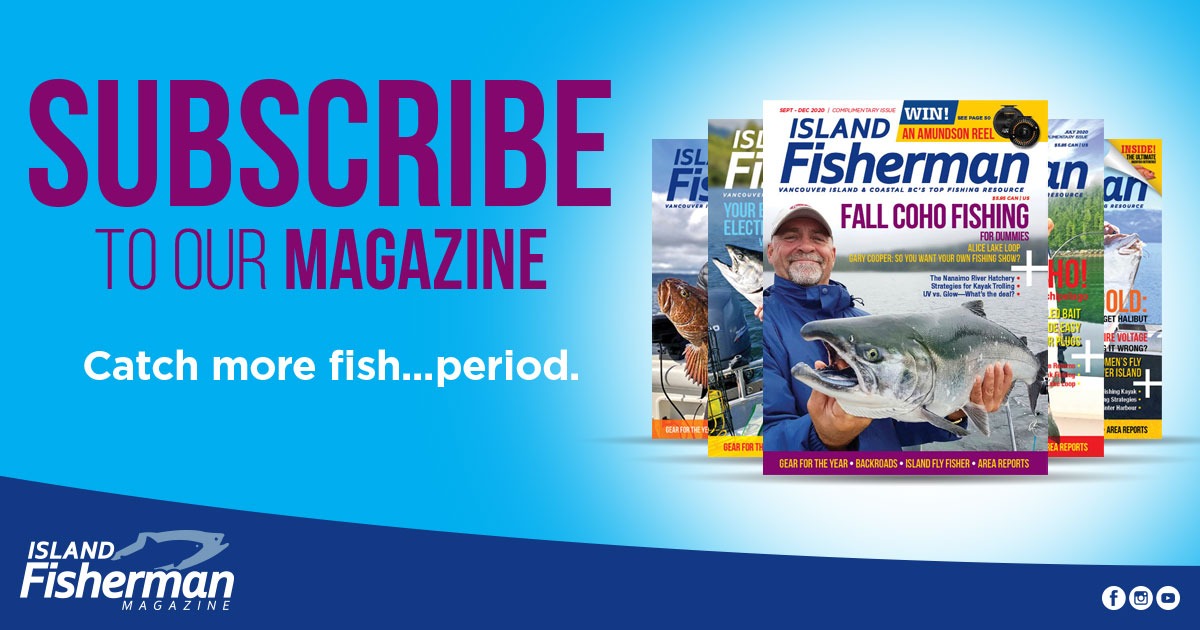In general, this article will relate to using pedal-powered kayaks, but all methods can be successfully deployed (some more easily than others) with paddle kayaks. They just require more patience, different strategies, and practice.
For success with each of these methods, it is very helpful to have a sounder on your kayak, as locating fish or bait at specific depths helps to put your tackle in the zone.
Downriggers for Kayaks
Most of us are familiar with this tried-and-true West Coast method.
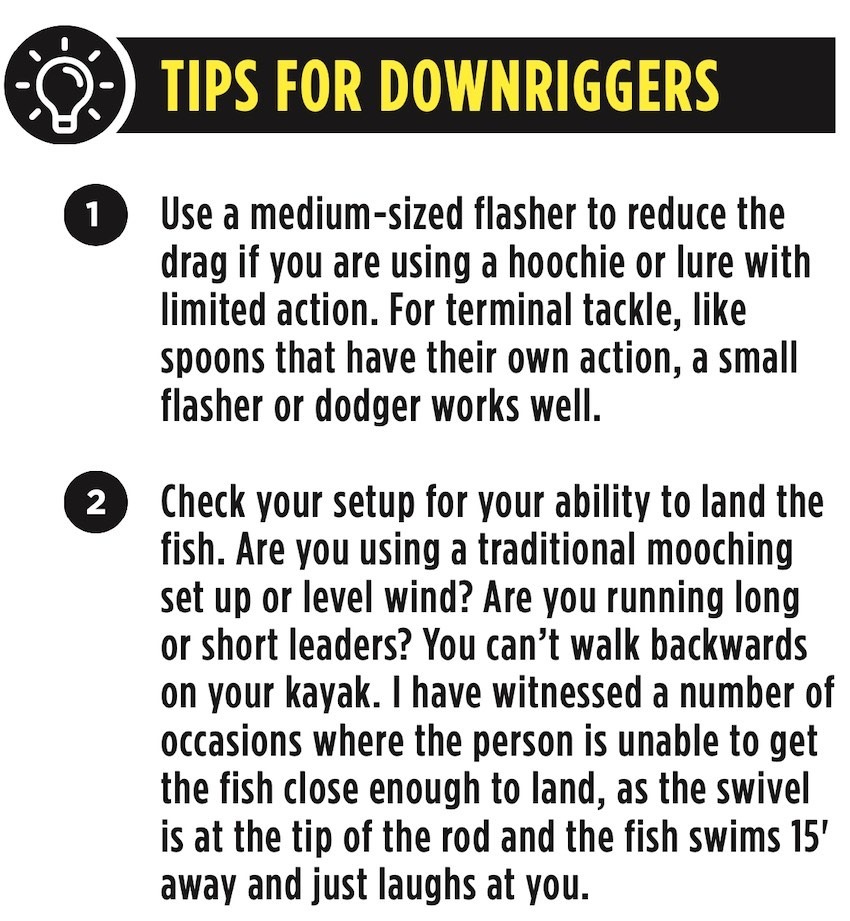
Yup, release the break and let it go, then press the button and it comes up. For the kayak version, we go back to our childhood (or at least I do), a time when we hand-wound all our rigger lines. With kayaks, weight distribution, drag, mounting location, and method all become more critical to ease of use and effectiveness. The other factor I am often asked about is maximum depth. I carry 200′ of braid (less resistance) on mine and will fish it up to 150′. That’s a fair bit of winding on retrieval, so I normally prefer to max out at 100′ and use it more frequently when fish are moving into that less-than-60′ zone. It’s all attainable; it just depends on your fitness level. Beyond this, the configuration is the same as on your boat.
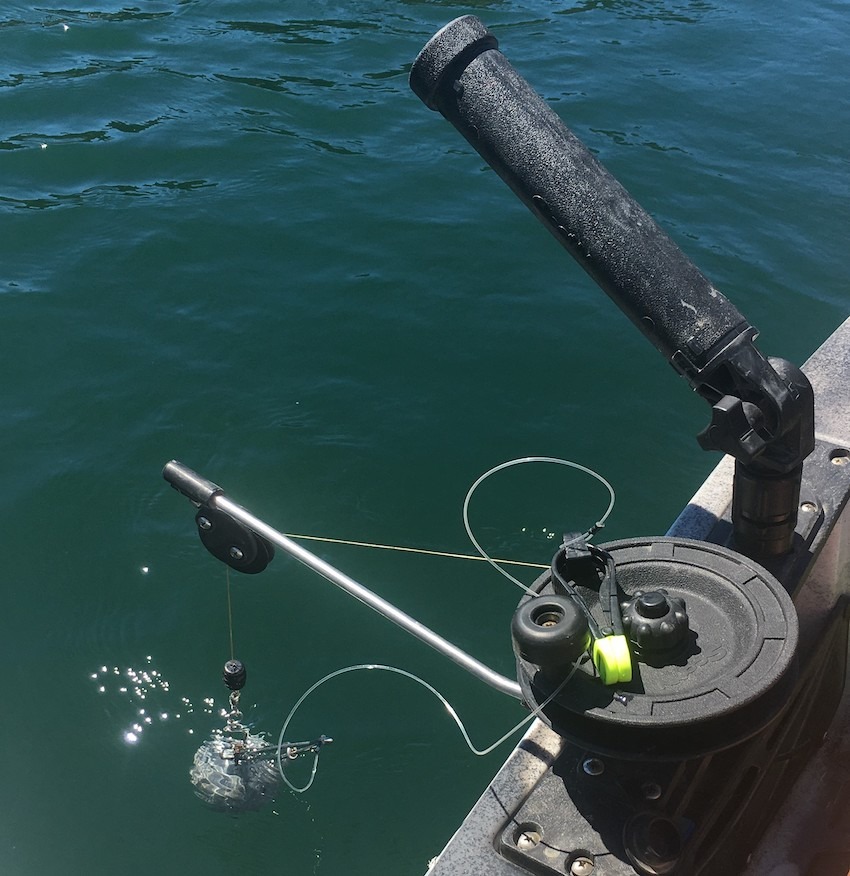
So, this leads me to my preferred downrigger method for the kayak: dummy flasher off the ball, and just run the lure or bait directly off the swivel. This makes playing the fish a lot more fun and landing the fish so much simpler.
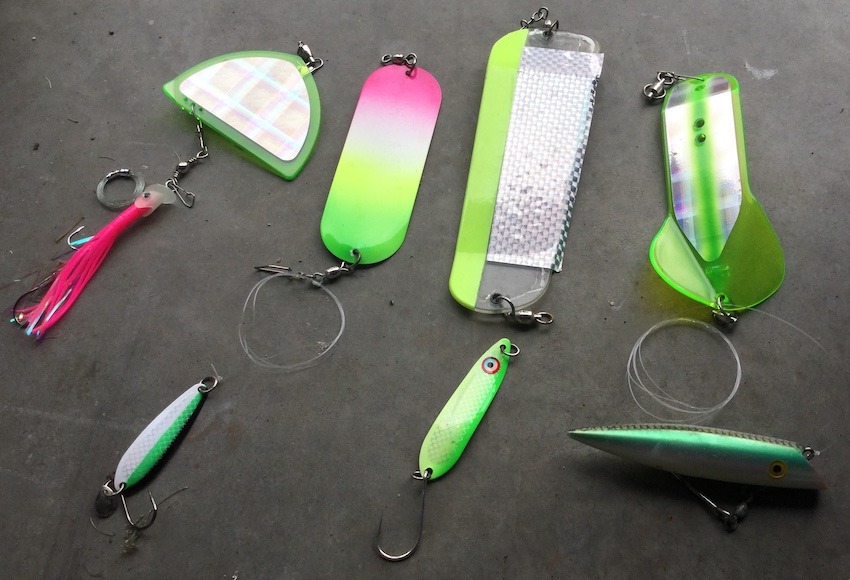
Fixed Weights for Kayak Trolling
I grew up fishing tidal eddies with banana weights and plugs. This is still one of my favorite techniques, as I like the way the banana weight sets up with the terminal tackle. There are many options when it comes to weights—banana, drop shot, slider—whatever your prefer will work. The key factor is to carry different sizes to ensure you are in the zone. In this configuration, you can still run a flasher/dodger option, but I prefer just running straight to terminal tackle, as the combination of the weight and flasher creates too much drag and less enjoyment playing and landing a fish. I am often asked about reaching depth with fixed weights. I think in most instances, it is not as important to be at an exact depth as it is to be in the right zone. If you have a sounder on your kayak, you can generally drop the weight and tackle down at very slow speed. It is then picked up by the sounder, which you can use to gauge your depth. Another method employed is to mark the line at 50′ or 100′ foot intervals and then employ a little physics to estimate depth. The bottom line is if you’re on the fish you’re good; if not, switch up your weight and change up your speed until you find the zone.
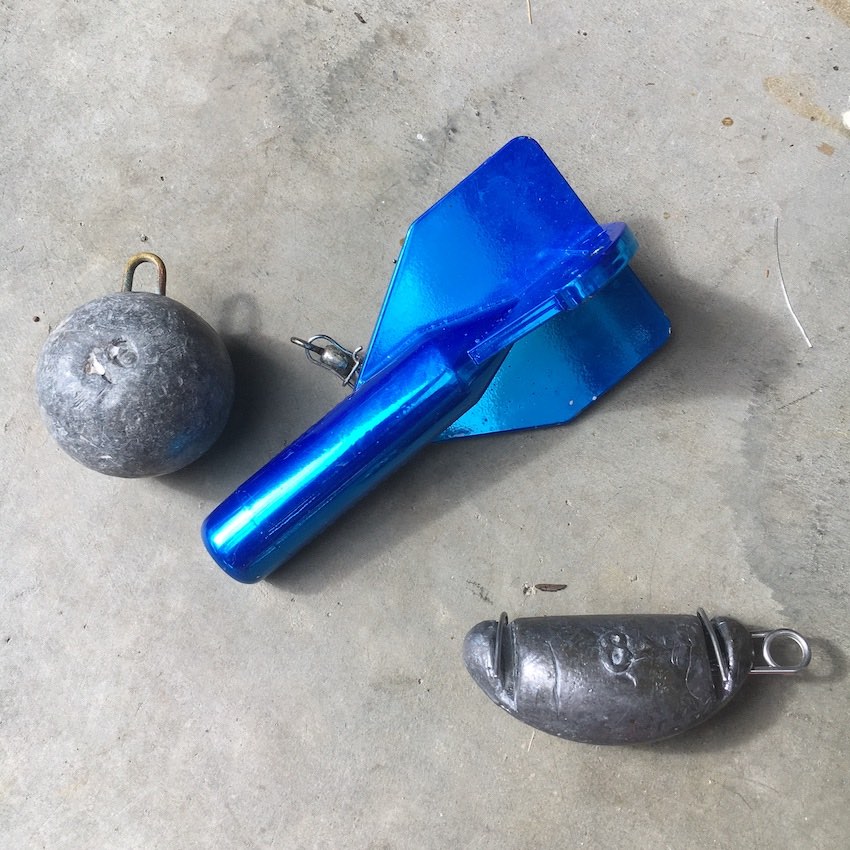
Inline Divers for Kayak Trolling (Diving Planers and Disk Planers)
Popular in some regions, dipsy divers, deep six, or trip tease divers offer a great inline solution for use to reach certain depths. The products can be purchased or set to reach specific target depths. Newer models have release clips so that when the fish strikes, it releases and allows you to play only the fish. Divers do not work with flashers or dodgers, as the action creates too much drag and will release any clip or simply make the mechanism ineffective. Additionally, these tools generally max out at 60′ for practical application from the kayak. One attractive feature of these products is they float to the surface when forward motion stops. This can be an added bonus if you’re experienced enough to try fishing two lines. If fishing two weights, the line often can tangle, whereas when playing a fish with the diving devices, the other line comes to the surface.
Leaded Line for Kayak Trolling
This is a method I first learned on Lake Ontario, and have not seen employed much on the West Coast. It is a great way to fish from a kayak. The setup is simple, and depth is controlled purely by line density and how much line is let out.
As a general rule, these are best fished using some form of level-wind and shorter rod; it is a very effective means of getting your tackle in the zone without any extra line or external hardware.
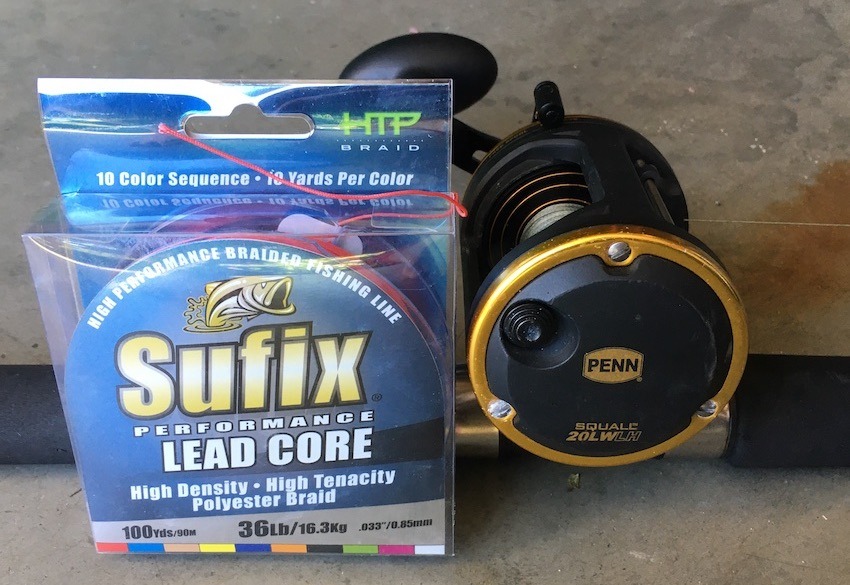
Fly Line Trolling from a Kayak
Many have asked me how this could work other than bucktailing for coho as they come inshore in the fall. I have one setup utilizing Type III sinking line that I have used successfully. My technique is to let out an amount of line equivalent to the water depth being fished and let it sink. Once this is done, I slowly begin advancing my position and changing up my speed, which in turn imparts a variable action on the terminal tackle and allows me to fish the entire water column. Once the line is fully stretched out and reaches near the surface, I allow it to drop and repeat the process. This method works great when working bait schools.
Back Trolling from a Kayak
Anywhere where we can find moving water (river, strong tidal area) and can generally hold our position (anchor or pedaling), we can simply pitch our bait or tackle out the “back” using any of the above techniques and wait for the strike. Although there are not as many places to try this technique, I had success in the Courtenay River, and it creates a novel and fun way to fish if you want to explore some of the rivers in the fall.
Stay safe on the water and take someone fishing!
For more on kayak fishing, click here.
This article appeared in Island Fisherman magazine. Never miss another issue—subscribe today!


